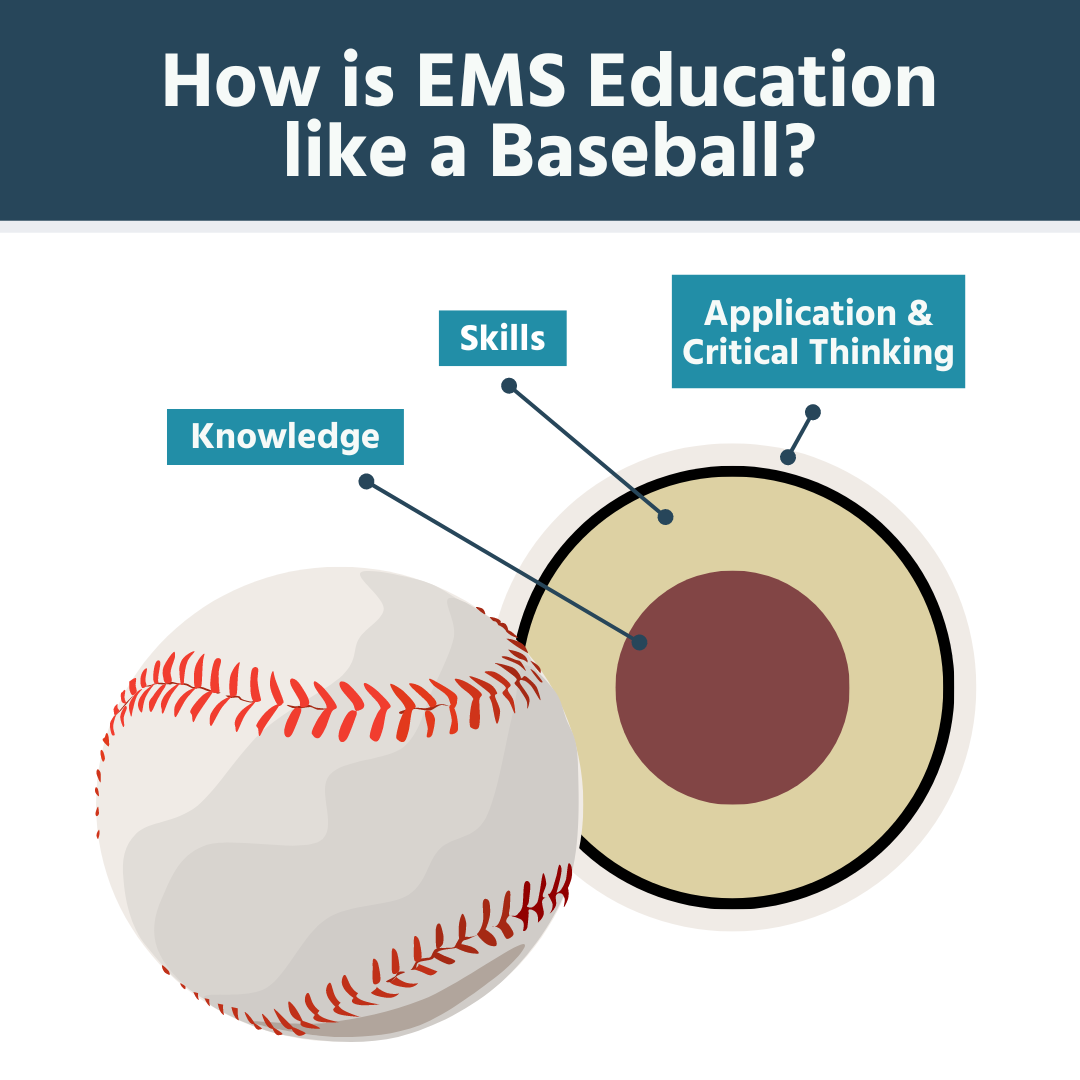
Dan Limmer, BS, NRP

by Dan Limmer, BS, NRP
Our articles are read by an automated voice. We offer the option to listen to our articles as soon as they are published to enhance accessibility. Issues? Please let us know using the contact form.
Many people believe that EMS education prepares the student for the exam—not the street. A recent EMS1.com article by Steve Whitehead discussed this.
Some believe that preparation for the NREMT exam is one set of information while a totally different set of material is necessary to prepare our students for the street. This first group of educators “teach to the test.” Many believe there just isn’t time to do both.
I agree with Steve on this one. You can do both. When I present to educators I use a baseball as the analogy for the material needed to pass the test and practice on the street. A baseball is layered. The inside is cork. Then there is twine tightly wrapped around the cork. These two things represent the knowledge and skills learned in the EMS classroom.
But the baseball is held together by a beautiful sewn leather cover. This cover represents the material needed to practice on the street. It is application, experience and judgment. I believe we can get much of that in class—especially if we embrace more active learning methods.
It isn’t a separate set of information that is needed to pass the test. It is just a finishing like that leather cover of the baseball. It holds it all together and makes it functional.

Current methods of PowerPoint-based lecture and simple skills practice only lead students to proficiency on the inside of the baseball: knowledge and skills. If we can break free and adopt active learning exercises, students will get greater practical experience, more true application, and greater decision-making opportunities. These active methods give us the beautiful sewn cover over our education that helps prepare our students for the street—and with the challenging application questions on the NREMT exam.
An EMT coming out of the best EMT class will still need some field experience, but we must realize that the classroom can and should help prepare a student for the street.
Here are some additional resources we have created to help you with adding more active learning methods in the EMS classroom:
Classroom Tools for EMS Educators [Various Downloadables]
Let us know how else we can help you "hit a homerun" in your EMS classroom!

Dan Limmer, BS, NRP

Limmer Education
I love this analogy. I have this same conversation with my EMT Students on their first class during orientation. I explain that of course I want to successfully set them up to do well on their module exams, pass our final and then their NREMT examinations, but I also need them to understand what it will be like when they’re really on the street so they’re not completely shell shocked, or in the worst case scenarios - get hurt or hurt someone else and/or leave the profession.
This is Perfect, but, how do we get the dinosaurs to change to birds and prevent them from making new dinosaurs?! It seems the educators have to want to change or we need to empower students to not accept Death-by-PowerPoint!
Well said obi-wan Grayson. Well said.
I believe we are getting there gradually.
I liken it to a set of instructions: draw a square. On top of the square, draw a triangle. In the square, draw a smaller square and a rectangle. In the rectangle, draw a little circle.
Directly out of class, the student can do all of those things, and the result looks like cubist art.
A good preceptor translates that into, "Draw me a house."
The more student-directed the classroom is, the fewer art lessons the preceptor has to conduct.